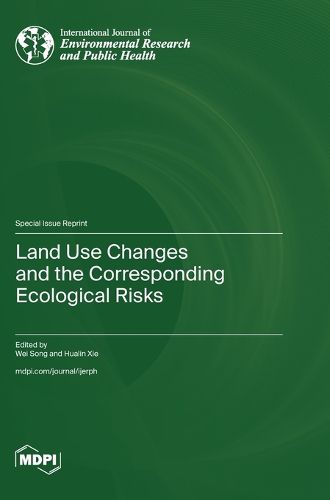Readings Newsletter
Become a Readings Member to make your shopping experience even easier.
Sign in or sign up for free!
You’re not far away from qualifying for FREE standard shipping within Australia
You’ve qualified for FREE standard shipping within Australia
The cart is loading…






This title is printed to order. This book may have been self-published. If so, we cannot guarantee the quality of the content. In the main most books will have gone through the editing process however some may not. We therefore suggest that you be aware of this before ordering this book. If in doubt check either the author or publisher’s details as we are unable to accept any returns unless they are faulty. Please contact us if you have any questions.
This reprint focuses on land use change processes and their driving mechanisms, ecological risks and eco-environmental effects. The spatio-temporal pattern changes and key driving factors of cultivated land, urban land, wetland, ecological land and mining land were studied at national or regional scales, such as in China, the Tibetan Plateau, the Yangtze River Delta, the Yellow River Basin, urban agglomeration and mountainous areas. The economic or ecological efficiency, ecological risks and environmental effects of typical land use changes, e.g., the effects of ecological restoration on critical services, the impact of planting structure changes on water resources and the impacts of urban expansion on food security and air pollution, as well as the environmental risks of chemical fertilizer application and coal-mining, were analyzed in depth using multi-source data and multiple methods. Revealing land use change characteristics and their potential ecological risks and impacts on food security, ecosystem services and climate change is an important basis for the sustainable development of social economies and ecosystems. The scientific methodologies, analyzed findings, systematic insights, and policy implications of this reprint will contribute to the advancement of knowledge and provide practical guidance for sustainable land management and land optimization to improve human wellbeing and eco-environment quality.
$9.00 standard shipping within Australia
FREE standard shipping within Australia for orders over $100.00
Express & International shipping calculated at checkout
This title is printed to order. This book may have been self-published. If so, we cannot guarantee the quality of the content. In the main most books will have gone through the editing process however some may not. We therefore suggest that you be aware of this before ordering this book. If in doubt check either the author or publisher’s details as we are unable to accept any returns unless they are faulty. Please contact us if you have any questions.
This reprint focuses on land use change processes and their driving mechanisms, ecological risks and eco-environmental effects. The spatio-temporal pattern changes and key driving factors of cultivated land, urban land, wetland, ecological land and mining land were studied at national or regional scales, such as in China, the Tibetan Plateau, the Yangtze River Delta, the Yellow River Basin, urban agglomeration and mountainous areas. The economic or ecological efficiency, ecological risks and environmental effects of typical land use changes, e.g., the effects of ecological restoration on critical services, the impact of planting structure changes on water resources and the impacts of urban expansion on food security and air pollution, as well as the environmental risks of chemical fertilizer application and coal-mining, were analyzed in depth using multi-source data and multiple methods. Revealing land use change characteristics and their potential ecological risks and impacts on food security, ecosystem services and climate change is an important basis for the sustainable development of social economies and ecosystems. The scientific methodologies, analyzed findings, systematic insights, and policy implications of this reprint will contribute to the advancement of knowledge and provide practical guidance for sustainable land management and land optimization to improve human wellbeing and eco-environment quality.